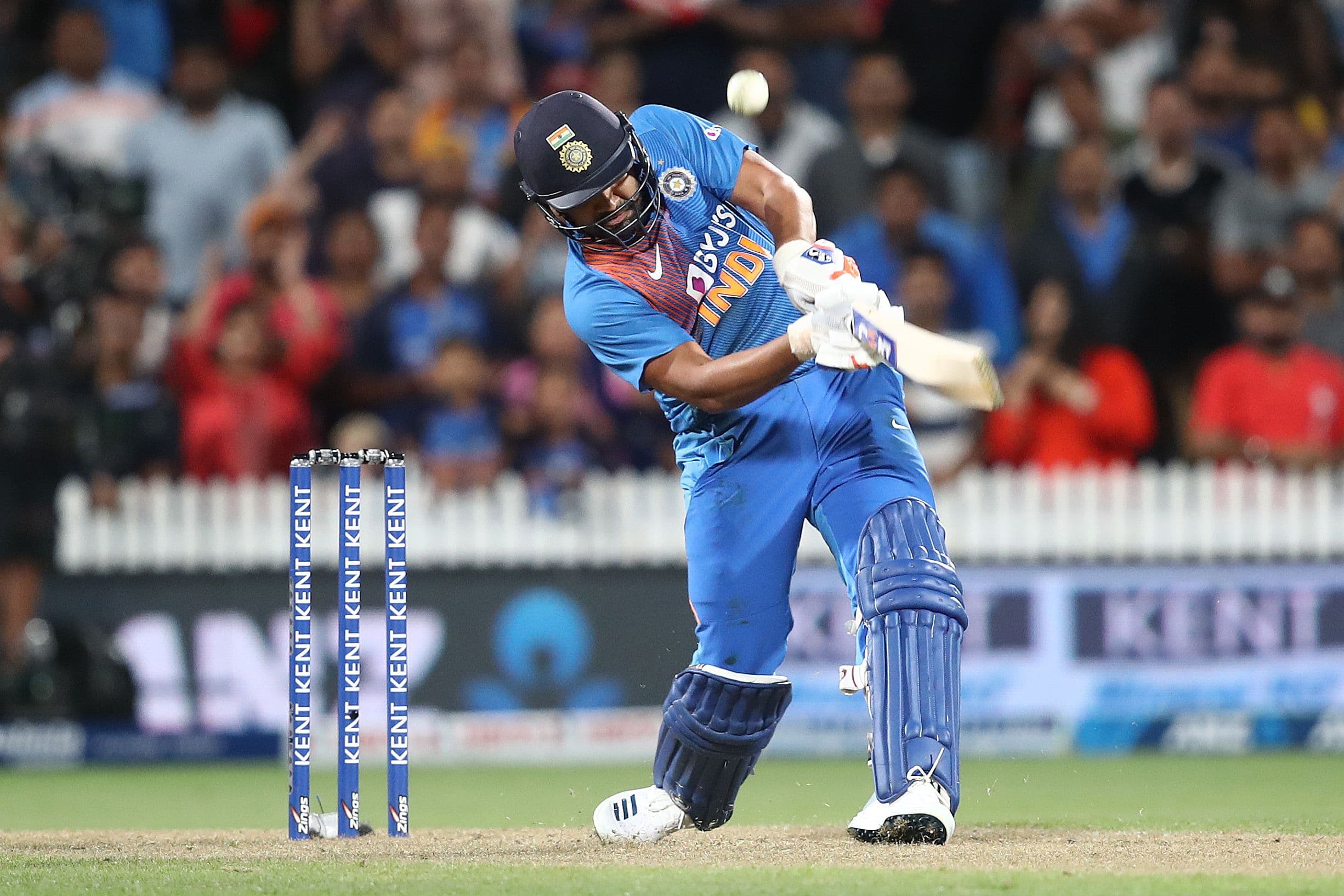Cricket
What is a Super Over in Cricket? All You Need to Know
Know what a Super Over in cricket is, its history and rules in detail. Also, get the top five scores tallied in Super Overs in international cricket.

Image Credits: Gareth Copley-ICC/ICC via Getty Images
A super over is used to decide cricket matches in limited-overs cricket that end as a draw. In a way, a super over is basically a one-over eliminator that helps to bring out a winner.
Before 2008, T20I cricket matches that got tied were decided by a bowl-out. The India-Pakistan match at the 2007 T20 World Cup group game is a popular example. However, super over replaced the bowl-out soon and has since been a crowd favorite.
In ODI cricket, the super over was introduced during the 2011 Cricket World Cup’s knockout games but it never had to be used. After that, a super over has been kept aside to decide a winner only for the finale clash. The 2019 ODI World Cup final between England and New Zealand was one such instance when the summit clash went to the super over.
If any of the other knockout matches, barring the final, end as a draw, the opponent with a better group stage performance goes through. The 2019 ODI WC final failed to find a champion even after the super over, which resulted in the ICC declaring the winner based on a chaotic boundary count-back rule. That rule has since been scrapped and amended.
Super overs were introduced in women’s cricket in 2017 during the World Cup and the Champions Trophy.
What are the Rules of Super Over?
Super over is now a regular fixture in domestic T20 tournaments as well like the Indian Premier League, Big Bash League, Pakistan Super League and more. Even the league stage games are decided by a super over in these leagues. Below are the rules of the super over that are followed overall.
Usually, the team scoring the most runs in six balls is declared the winner through super over. If a match ends in a tie even after the super over, subsequent super overs are played until the winner is finalized.
Whatever runs batters score or the wickets bowlers take in a super over aren’t added to their career stats.
The captain of the fielding side gets to choose the ball that would be used in the super over. The team batting second in a super over can either continue with the same ball or choose a different ball.
While the team that batted second in a match gets to bat first in a super over, the bowling team of a super over gets to choose the ground end from which they will bowl.
The period between the two overs of a super over will be five minutes.
Every team gets to choose three batters for one entire super over. Hence, if the bowling team gets two wickets, then the inning of that batting side ends.
As is the case in a normal game, a bowler cannot bowl successive overs in super overs, in case a consecutive super over is required.
Similar to a bowler, a batter cannot bat in successive super overs if one is dismissed once; he or she has to stay not-out. One such popular scenario happened during India’s T20I match with Afghanistan, skipper Rohit Sharma had left the turf citing retired out and returned to bat again in the second super over of the match.
If a super over fails to take place owing to any scenario whatsoever, the match will be deemed as a draw.

Image Credits: Phil Walter/Getty Images
Most runs in a super over
Most runs in a super over
| Winning team | Losing Team | Runs | Format |
| Netherlands | West Indies | 30/0 | ODI |
| West Indies women | South Africa women | 25/0 | ODI |
| West Indies | New Zealand | 25/1 | T20I |
| United States | Canada | 22/1 | T20I |
| India | New Zealand | 20/0 | T20I |
Netherlands vs West Indies, 2023 | 30/0
In one of the most shocking and enthralling super-over encounters, the Netherlands emerged victorious against the West Indies during the 2023 ICC World Cup qualifiers at Harare, Zimbabwe.
Concluding the pitch to be a high-scoring one was an understatement as the West Indies had posted a total of 374 runs while batting first, thanks to a century by Nicholas Pooran and half-centuries by Johnson Charles and Brandon Kings. But, to their dismay, the Netherlands matched the score with a century by Teja Nidamanuru and a fifty by Scott Edwards.
As if it wasn’t shocking enough, Netherlands’ Logan van Beek dominated the super over by smashing three boundaries and three sixes to post the highest super over score ever in international cricket. The Men in Marrion could muster just eight runs in response as they lost two wickets to lose the match dramatically.
West Indies women vs South Africa women, 2022 | 25/0
While the West Indian men carry an unwanted record in the super over, the nation’s women’s side has tallied the second-highest super over score in international cricket. This happened during the second ODI between West Indies Women’s Cricket team and South Africa Women’s Cricket team in 2022.
Batting first, the Proteas had accumulated a paltry score of 161 runs in 50 overs, but West Indian batters failed to get over the mark and somehow attained the par score before losing all their wickets.

Image Credits: Cameron Spencer/Getty Images
Both the teams had another chance at making things right through the super over and only West Indies took with both arms. Deandra Dottin and Hayley Matthews smashed 25 runs in the super over to hand South Africa a steep challenge, and the side could muster only 17 runs in return.
West Indies vs New Zealand, 2008 | 25/1
Before becoming the side to concede the most runs in a super over in international cricket, West Indies held the record of scoring the most number of runs in a super over. It was the second T20I match between West Indies and New Zealand in 2008 and West Indies had failed to chase down a small target of 156 runs.
The match went to super over with a towering Chris Gayle being at the peak of his powers. He ransacked Daniel Vettori for a whopping 25 runs single-handedly in six balls. In return New Zealand could manage only 15 runs before losing two wickets and losing the match.
FAQs About Super Over
There are two wickets available with every team during a Super Over. If the bowling team gets two wickets, that all wraps for the batting side.
As per the latest ICC rules and amendments, if a Super Over ends in a tie there will be subsequent Super Overs until the winner is decided eventually. The number of super overs that can be played is unlimited.
The team batting second in the regular game gets to bat first in the Super Over, while the team fielding second gets to choose the bowling end. However, in consequent Super Overs, the teams will keep toggling. Hence, the team batting first in the Super Over will bat second in the consequent Super Over and vice versa.
Yes, as is the case in regular matches, the DRS is available with each side, although each team gets only one unsuccessful review during the Super Over.
No, one bowler cannot bowl in subsequent Super Overs if the occasion arises. Similarly, a batter batting in the first Super Over won’t be able to bat in the second Super Over if he or she is dismissed. A batter can continue only if one remains unbeaten.
Though a rare scenario, a Super Over might not be completed owing to factors like rain or overshooting the time limit. In such a case, the match is deemed as a draw (No Result) with the points tied.

An M.A. in English Literature, Subhayan is an experienced journalist and sports writer. Having worked as a journalist at Hindustan Times, Subhayan covered diverse beats including sports, education, and health, showcasing his versatility and in-depth understanding of various subjects.